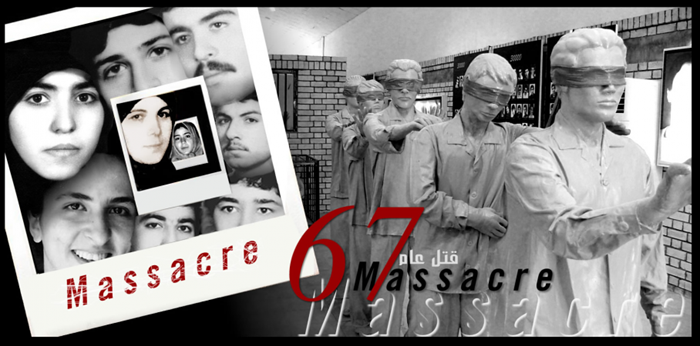
Ayatollah Hossein Ali Montazeri was once thought to become Iran’s Supreme Leader, following the reign of Ayatollah Ruhollah Khomeini.
The title would have come at the cost of ignorance over the 1988 mass executions in Iran which saw thousands of people executed. Montazeri was not prepared to watch idly while his fellow citizens were killed.
A recent article in the Washington Post by Brian Murphy examines the impact of this decision, examining the audio tapes which Montazeri left behind. The tapes document one of the official meetings that took place during this dark time.
The information revealed in the tapes sheds a light on the regime’s cruel acts against humanity and Montazeri’s unshakable conviction to take a moral stand, even at the risk of losing his political influence.
The audio tapes were released earlier this August by Montazeri’s son Ahmad who followed in his father’s footprints to become a cleric. They depict a meeting between Montazeri and the ‘Death Commission’ – a special commission, devised by Khomeini’s regime, to eliminate any opposition. Most of the victims were supporters of the People’s Mojahedin Organization of Iran (PMOI or MEK), a movement which has grown immensely since the 1980s. In a recent rally, the movement received support from more than 100,000 people at an international rally hosted earlier this year in Paris. These events echo Montazeri’s words expressed in the audio tape and reported in Washington Post: “Killing is the wrong way to resist against a thought, an idea… Responding to a process, a logic – even a faulty logic – with killing will solve nothing. It will make it worse.”
Because of his convictions of speaking out against the notorious crimes, such as execution of pregnant women and children following short ‘mock trials’, Montazeri was dropped as the successor of the Supreme Leader Khomeini and forced to spend years under house arrest. Once close friends and founders of the Iranian revolution, they faced a gulf of differences of opinion and moral stance that could not be resolved. Khomeini was later succeeded by Ayatollah Ali Khamenei, another cleric of a much lower ranking. “Some detractors say that Khamenei was selected as a low-risk leader who would not challenge the powers of the theocracy or its powerful backers such as the Revolutionary Guard Corps,” according to Murphy’s article.
Although he was closely involved in the 1979 revolution, a theocratic state was never Montazeri’s intention. He believed that “clerics should stay on the sidelines as advisers and guides to the nation, while elected officials and hired-on-merit technocrats took the helm.” But the Iran that Montazeri lived to see until his death in 2009 was one where clerics received more and more influence. Since his death, women in Iran have been forced the veil to use public services and ‘morality police’ have clamped down on fashion stores, inspired by claims from leading clerics that women wearing Western clothes are to blame for natural disasters.
Montazeri. Throughout his life he remained an outspoken about the brutalities of the regime, inspiring many other civilians to take action, despite the regime placing many in prison and executing. Because of his high profile among the people of Iran, Montazeri himself was not executed after he took the stand against the Death Commission in the meeting recorded on the audio tape.
The release of the tape provides further evidence against the regime of Iran, where many of the officials from the Death Commission (such as Mostafa Pourmohammadi, the current justice minister of Iran) still enjoy high ranking positions. Organizations such as the National Council of Resistance of Iran (NCRI), are putting pressure on the international community and prosecutors to bring justice to the victims of the 1988 massacre, and those who are executed by the regime today.







